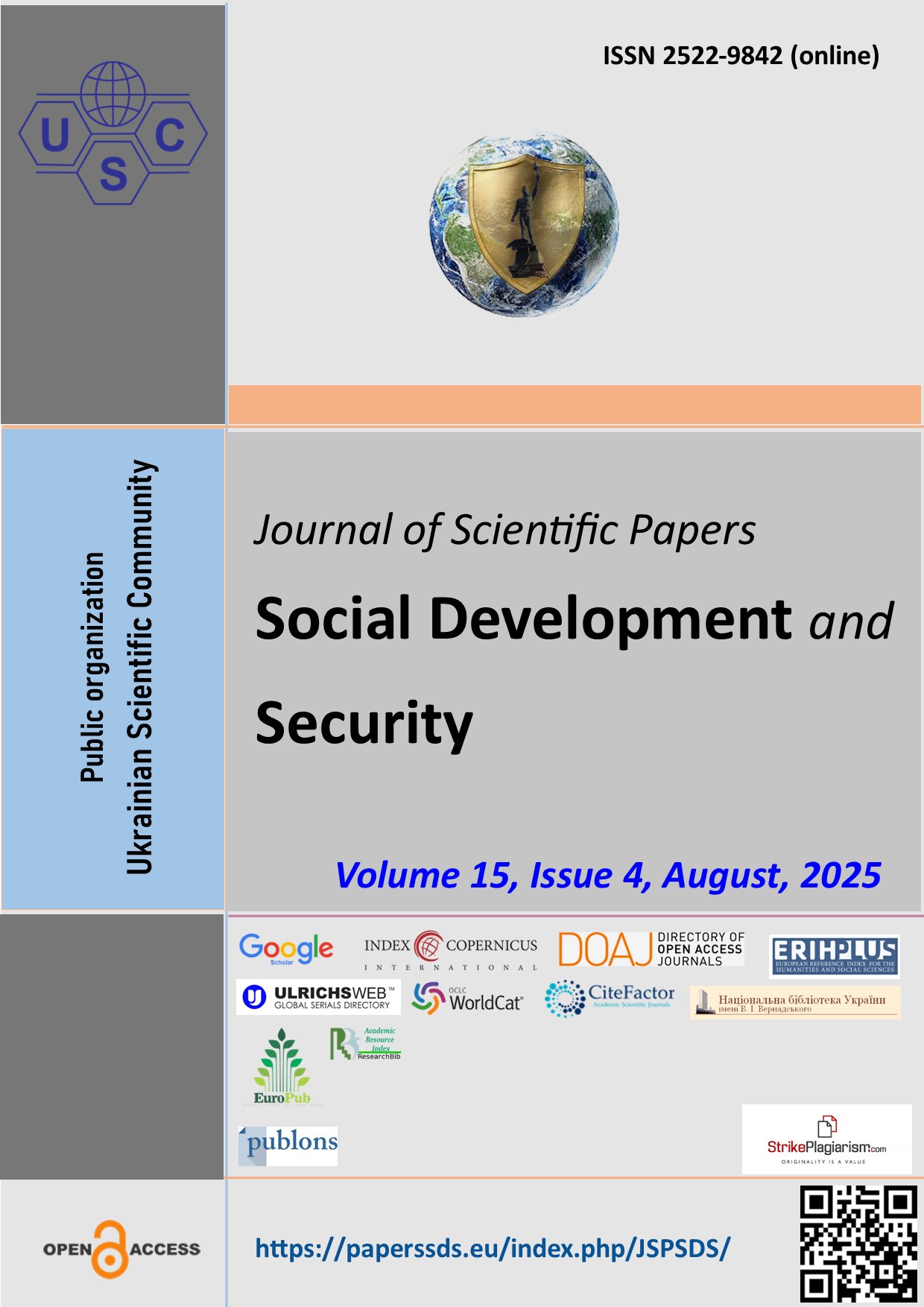Selection of Organizational Forms for Metrological Support of Digital IT Projects
Abstract
Purpose. Determination of the organizational form option for metrological support of digital IT projects during the development of a unified information and analytical system for digital projects.
Method. Methods of systems analysis, comparative analysis, conceptual modeling, generalization, and an expert-analytical approach.
Findings. The organizational forms of metrological support for digital IT projects have been examined, aimed at creating a unified information and analytical platform for continuous monitoring of software quality.
Theoretical implications. The theoretical principles, conclusions, and recommendations presented in the paper may serve as a foundation for further scientific research and discussions on improving metrological support for digital IT projects.
Practical implications. The implementation of the recommendations and proposals substantiated in the paper is aimed at developing integrated approaches to metrological support of digital projects. This will contribute to expanding existing knowledge and practices in the field of metrological support for digital IT projects by integrating metrology into the overall concept of strategic management of digital projects.
Originality of the study. This research analyzes specific factors influencing the functioning of the entire vertical structure of management bodies and the implementation of metrological support measures, which have not previously been the subject of comprehensive scientific investigation.
Downloads
References
Verkhovna Rada of Ukraine. (2003). Law of Ukraine “On metrology and metrological activity”. Vidomosti Verkhovnoi Rady Ukrainy, (27), Article 190.
State Standard of Ukraine. (2011). National system for ensuring the uniformity of measurements: DSTU ISO/IEC 17025:2011. Kyiv: Derzhstandart Ukrainy.
International Organization for Standardization. (2016). ISO/IEC 25023:2016 Systems and software engineering — Systems and software quality requirements and evaluation (SQuaRE) — Measurement of system and software product quality. Geneva: ISO.
International Organization for Standardization. (2017). ISO/IEC 15939:2017 Systems and software engineering — Measurement process. Geneva: ISO.
Institute of Electrical and Electronics Engineers. (1998). IEEE Std 1061-1998 IEEE Standard for a Software Quality Metrics Methodology. New York: IEEE.
Kuznetsov, I. B., Matsko, O. Y., Hudyma, V. P., & Yaroshenko, O. V. (2020). Organization of metrological support of the troops (forces). Part 1 (Textbook). Kyiv: National Defence University of Ukraine named after Ivan Cherniakhovskyi.
Tarasova, V. V., Malynovskyi, A. S., & Rybak, M. F. (2006). Metrology, standardization and certification (V. V. Tarasova, Ed.). Kyiv: Center for Educational Literature.
Korenets, Y. M. (2023). Standardization, certification and metrology (Textbook). Kryvyi Rih: DonNUET.
Kolomiiets, L. V., Vorobiyenko, P. P., Kozachenko, M. T., Nalisnyi, M. B., Serebrin, V. L., Kozachenko, L. O., Hrabovskyi, O. V., & Lebedynska, L. O. (2009). Metrology, standardization, certification and quality management in communication systems. Odesa: VMV.
Hudyma, V., & Chervoniak, V. (2025). Analysis of factors influencing the system of metrological support of military units of the Armed Forces of Ukraine based on the experience of the Russian-Ukrainian war. Social Development and Security, 15(1), 76–87. https://doi.org/10.33445/sds.2025.15.1.7
Fenton, N., & Pfleeger, S. L. (1998). Software metrics: A rigorous and practical approach. Boca Raton: CRC Press.
Kan, S. H. (2002). Metrics and models in software quality engineering. Boston: Addison-Wesley.
Abstract views: 91 PDF Downloads: 27
Copyright (c) 2025 Vitalii Yarovyi, Oksana Andriienko, Viktor Hudyma

This work is licensed under a Creative Commons Attribution 4.0 International License.
The authors agree with the following conditions:
1. Authors retain copyright and grant the journal right of first publication (Download agreement) with the work simultaneously licensed under a Creative Commons Attribution License that allows others to share the work with an acknowledgment of the work's authorship and initial publication in this journal.
2. Authors have the right to complete individual additional agreements for the non-exclusive spreading of the journal’s published version of the work (for example, to post work in the electronic repository of the institution or to publish it as part of a monograph), with the reference to the first publication of the work in this journal.
3. Journal’s politics allows and encourages the placement on the Internet (for example, in the repositories of institutions, personal websites, SSRN, ResearchGate, MPRA, SSOAR, etc.) manuscript of the work by the authors, before and during the process of viewing it by this journal, because it can lead to a productive research discussion and positively affect the efficiency and dynamics of citing the published work (see The Effect of Open Access).
















